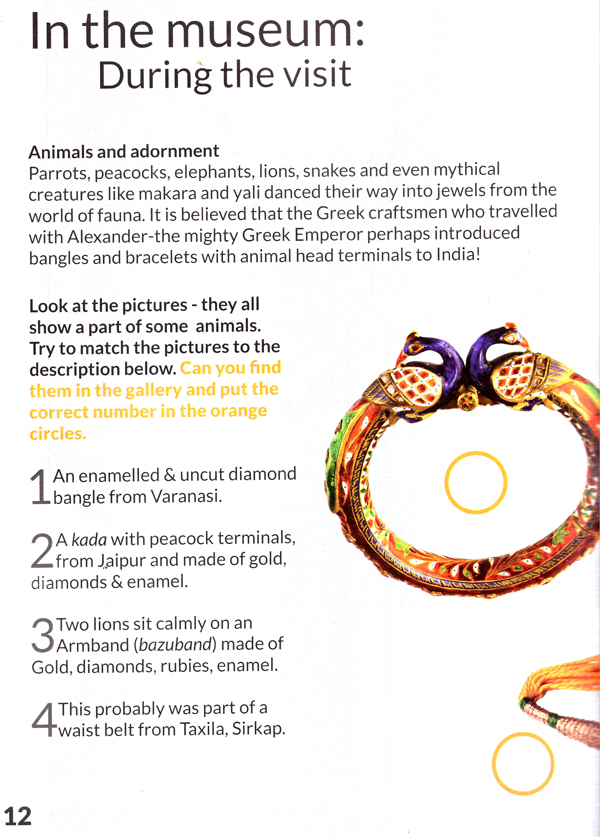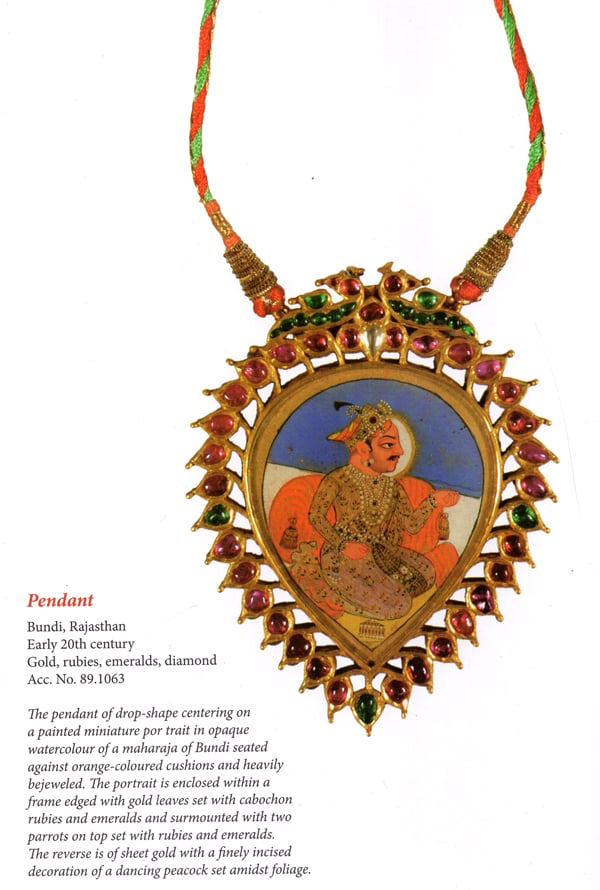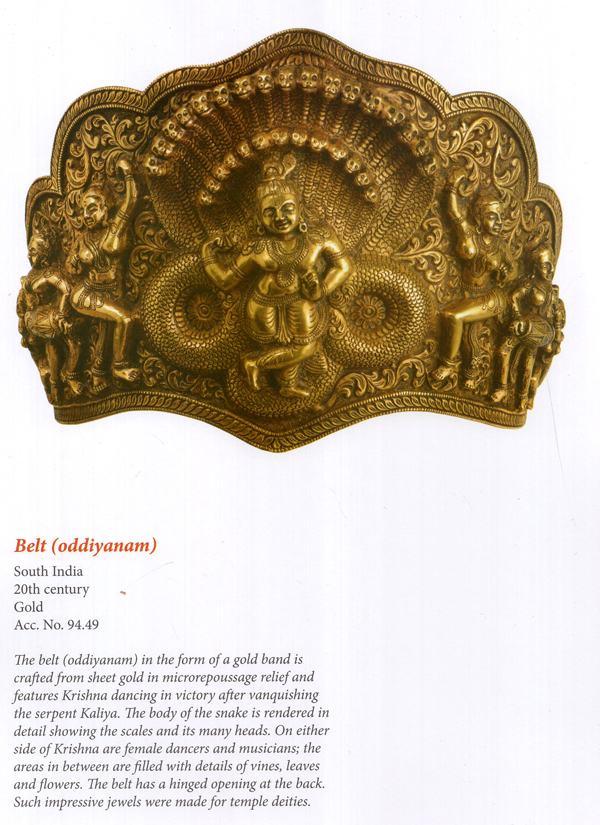
Alamkara Jewellery Gallery (Teacher's Resource Pack & Children's Workbook)
Book Specification
| Item Code: | NAX263 |
| Author: | Usha Balakrishnan |
| Publisher: | National Museum, New Delhi |
| Language: | English |
| Edition: | 2016 |
| Pages: | 35 (All Throughout Color Illustrations) |
| Cover: | PAPERBACK |
| Other Details | 12.00 X 8.50 inch |
| Weight | 240 gm |
Book Description
There are 'Mughal' style jewels with kundan set gems in the front and minakari enamelling on the reverse; and, sheet gold necklaces and bangles worked in repousse from south India. There are hair ornaments for women and turban jewels for men, necklaces that hug the throat and those that cascade down to the waist; there are earrings, armbands, bangles and bracelets. The jewels are set with diamonds, rubies and emeralds, white sapphires and pearls.
The term 'jewel' comes from the old French word joule - as something that gives 'joy. So, by 'jewel' is implied everything that gives joy when worn. It amply sums up what jewellery stands for in the Indian emotional-cultural context. In India, the joy derived from alankara or adornment was not restricted to precious metals or even precious gems. Shells, feathers, bone, ivory, and all kinds of beads were fashioned into body decorations to give pleasure when worn. Jewellery in India was not just a component of attire, but was a passion.
The significance of adornment in Indian culture is manifest in every period and evident in thousands of sculptures, paintings and photographs through the centuries. Most importantly, jewels are intrinsic to the human body in Indian art. The chronicle of Indian they jewellery commences in the ancient cities of the Indus Valley civilization more than three thousand years before the Common Era. Excavations at Mohenjo-Daro, Harappa, and other sites have brought forth a treasure trove of beads of different shapes and sizes fashioned from gold, agate, jasper, steatite, carnelian and faience. India was a principal supplier of beads to far-flung cities in the ancient world.
The famous bronze dancing girl from the city of Mohenjo-Daro is nude but adorned with jewellery. She stands elegantly her left arm hanging down resting on her thigh stacked with bangles from the wrist all the way up to her shoulder. On her right arm, which is bent at the elbow and placed on her hips, she wears just two bangles - one at the wrist and the other just above the elbow. Around her neck hangsa cord with a pendant of three pod-shaped beads. Another bronze fragment of an elegant foot, also from Mohenjo-Daro wears a beautiful anklet. Simple terracotta figurines are heavily ornamented with jewels - strips and bits of clays are applied as necklaces, chokers, bangles and girdles. Jewels from the Indus Valley in the museum's collection manifest a sophistication of design and skilled craftsmanship by artisans of this early pre-historic period.
The many invasions of India from Alexander to Babur resulted in a dispersion of jewellery styles from Greece, Persia and Central Asia into India. From the 16th century the Portuguese, the English and the French brought their own influences to bear. Itinerant craftsmen carried their trade and skills across kingdoms and courts. All these interactions exposed local craftsmen to new design influences and techniques - they absorbed, assimilated reinterpreted and what emerged was a unique and distinct Indian style of jewellery.
Book's Contents and Sample Pages









